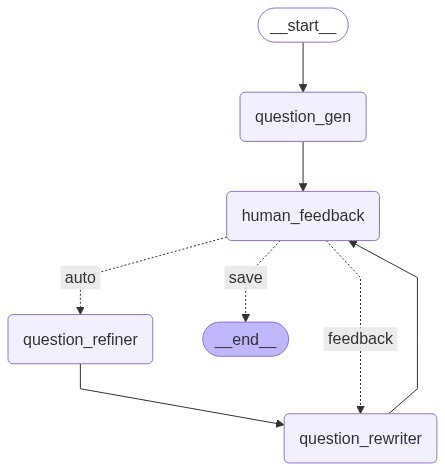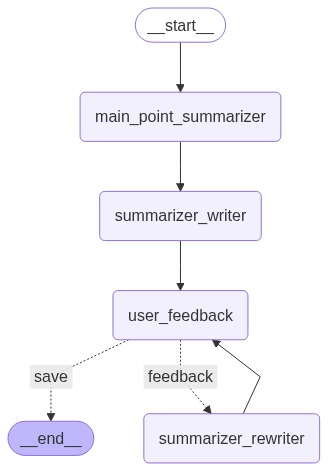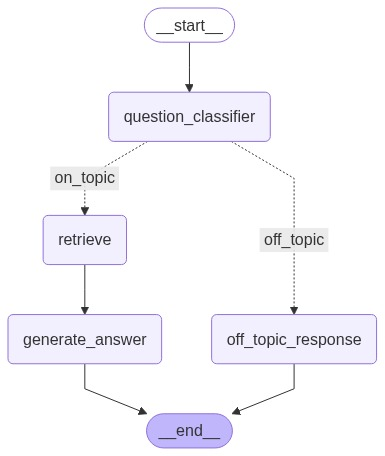CourseTA - AI Teaching Assistant
CourseTA is an Agentic AI-powered teaching assistant that helps educators process educational content, generate questions, create summaries, and build Q&A systems.
Features
- File Upload: Upload PDF documents or audio/video files for automatic text extraction
- Question Generation: Create True/False or Multiple Choice questions from your content
- Content Summarization: Extract main points and generate comprehensive summaries
- Question Answering: Ask questions and get answers specific to your uploaded content
Demo
Requirements
- Python 3.9+
- Dependencies listed in
requirements.txt - FFmpeg (for audio/video processing)
- Ollama (optional, for local LLM support)
Installation
Clone this repository:
1 2https://github.com/Sh-31/CourseTA.git cd CourseTAInstall FFmpeg:
Linux (Ubuntu/Debian):
1 2sudo apt update sudo apt install ffmpegInstall the required Python packages:
1pip install -r requirements.txt(Optional) Install Ollama for local LLM support:
Windows/macOS/Linux:
- Download and install from https://ollama.ai/
- Or use the installation script:
1curl -fsSL https://ollama.ai/install.sh | shPull the recommended model:
1ollama pull qwen3:4bSet up your environment variables (API keys, etc.) in a
.envfile.Update
.envwith your credentials:1cp .env.example .env
Usage
Running the Application
Start the FastAPI backend:
1python main.pyIn a separate terminal, start the Gradio UI:
1python gradio_ui.py
Architecture
CourseTA uses a microservice architecture with agent-based workflows:
- FastAPI backend for API endpoints
- LangChain-based processing pipelines with multi-agent workflows
- LangGraph for LLM orchestration
Agent Graph Architecture
CourseTA implements three main agent graphs, each designed with specific nodes, loops, and reflection mechanisms:
1. Question Generation Graph

The Question Generation agent follows a human-in-the-loop pattern with reflection capabilities:
Nodes:
- QuestionGenerator: Initial question creation from content
- HumanFeedback: Human interaction node with interrupt mechanism
- Router: Decision node that routes based on feedback type
- QuestionRefiner: Automatic refinement using AI feedback
- QuestionRewriter: Manual refinement based on human feedback
Flow:
- Starts with question generation
- Enters human feedback loop with interrupt
- Router decides:
save(END),auto(refiner), orfeedback(rewriter) - Both refiner and rewriter loop back to human feedback for continuous improvement
2. Content Summarization Graph

The Summarization agent uses a two-stage approach with iterative refinement:
Nodes:
- SummarizerMainPointNode: Extracts key points and creates table of contents
- SummarizerWriterNode: Generates detailed summary from main points
- UserFeedbackNode: Human review and feedback collection
- SummarizerRewriterNode: Refines summary based on feedback
- Router: Routes to save or continue refinement
Flow:
- Sequential processing: Main Points → Summary Writer → User Feedback
- Feedback loop: Router directs to rewriter or completion
- Rewriter loops back to user feedback for iterative improvement
3. Question Answering Graph

The Q&A agent implements intelligent topic classification and retrieval:
Nodes:
- QuestionClassifier: Analyzes question relevance and retrieves context
- OnTopicRouter: Routes based on question relevance to content
- Retrieve: Fetches relevant document chunks using semantic search
- GenerateAnswer: Creates contextual answers from retrieved content
- OffTopicResponse: Handles questions outside the content scope
Flow:
- Question classification with embedding-based relevance scoring
- Conditional routing: on-topic questions go through retrieval pipeline
- Off-topic questions receive appropriate redirect responses
- No loops - single-pass processing for efficiency
Key Architectural Features
Human-in-the-Loop Design:
- Strategic interrupt points for human feedback
- Continuous refinement loops in generation and summarization
- User control over when to complete or continue refining
Reflection Agent Architecture:
- Feedback incorporation mechanisms
- History tracking for context preservation
- Iterative improvement through dedicated refiner/rewriter nodes
Async API Architecture
CourseTA implements a comprehensive async API architecture that supports both synchronous and streaming responses, providing real-time user experiences and efficient resource utilization.
API Documentation
File Processing APIs
1. Upload File
Upload PDF documents or audio/video files for text extraction and processing.
URL: /upload_file/
Method: POST
Content-Type: multipart/form-data
Request Body:
| |
Response:
| |
Supported Formats:
- PDF:
.pdffiles - Audio:
.mp3,.wavformats - Video:
.mp4,.avi,.mov,.mkv,.flvformats
2. Get Extracted Text
Retrieve the processed text content for a given asset ID.
URL: /get_extracted_text/{asset_id}
Method: GET
Path Parameters:
asset_id: The unique identifier returned from file upload
Response:
| |
Question Generation APIs
3. Start Question Generation Session
Generate questions from uploaded content with human-in-the-loop feedback.
URL: /api/v1/graph/qg/start_session
Method: POST
Request Body:
| |
Parameters:
asset_id: Asset ID from file upload (required)question_type: Question type - “T/F” for True/False or “MCQ” for Multiple Choice (required)
Response:
| |
4. Provide Question Feedback
Provide feedback to refine generated questions or save the current question.
URL: /api/v1/graph/qg/provide_feedback
Method: POST
Request Body:
| |
Parameters:
thread_id: Session ID from start_session (required)feedback: Feedback text, “auto” for automatic refinement, or “save” to finish (required)
Response:
| |
Content Summarization APIs
5. Start Summarization Session (Streaming)
Generate content summaries with real-time streaming output.
URL: /api/v1/graph/summarizer/start_session_streaming
Method: POST
Content-Type: text/event-stream
Request Body:
| |
Parameters:
asset_id: Asset ID from file upload (required)
Streaming Response Events:
| |
6. Provide Summarization Feedback (Streaming)
Refine summaries based on user feedback with streaming responses.
URL: /api/v1/graph/summarizer/provide_feedback_streaming
Method: POST
Content-Type: text/event-stream
Request Body:
| |
Parameters:
thread_id: Session ID from start_session_streaming (required)feedback: Feedback text or “save” to finish (required)
Streaming Response Events:
| |
Question Answering APIs
7. Start Q&A Session (Streaming)
Answer questions based on uploaded content with streaming responses.
URL: /api/v1/graph/qa/start_session_stream
Method: POST
Content-Type: text/event-stream
Request Body:
| |
Parameters:
asset_id: Asset ID from file upload (required)initial_question: The first question to ask about the content (required)
Streaming Response Events:
| |
8. Continue Q&A Conversation (Streaming)
Continue an existing Q&A session with follow-up questions.
URL: /api/v1/graph/qa/continue_conversation_stream
Method: POST
Content-Type: text/event-stream
Request Body:
| |
Streaming Response Events:
| |
Headers for Streaming APIs
Required Headers:
| |

